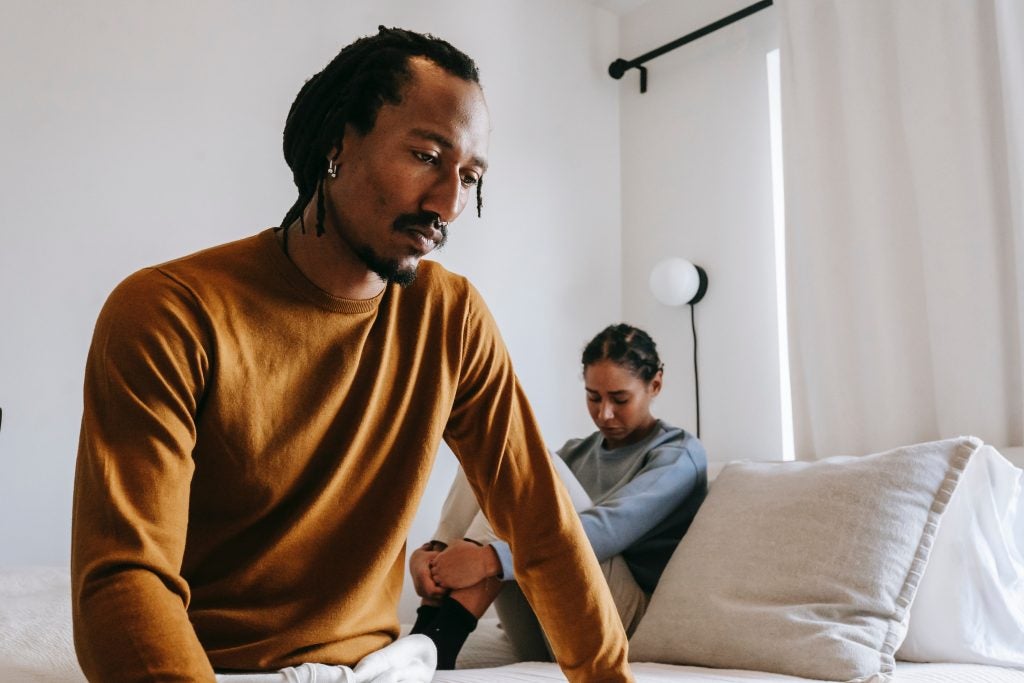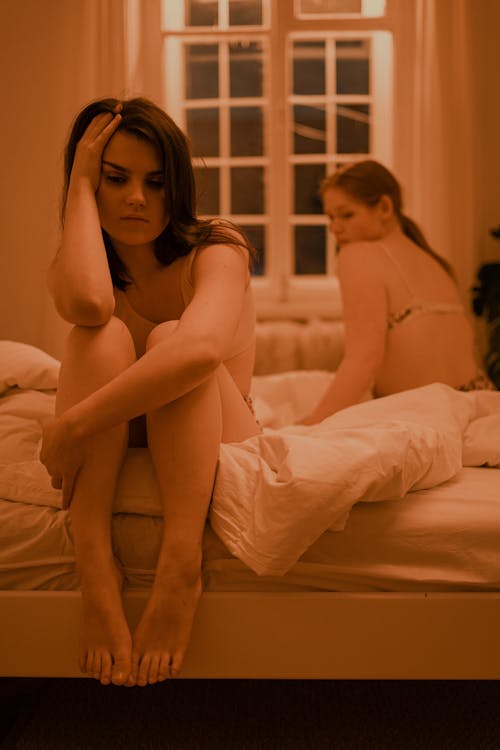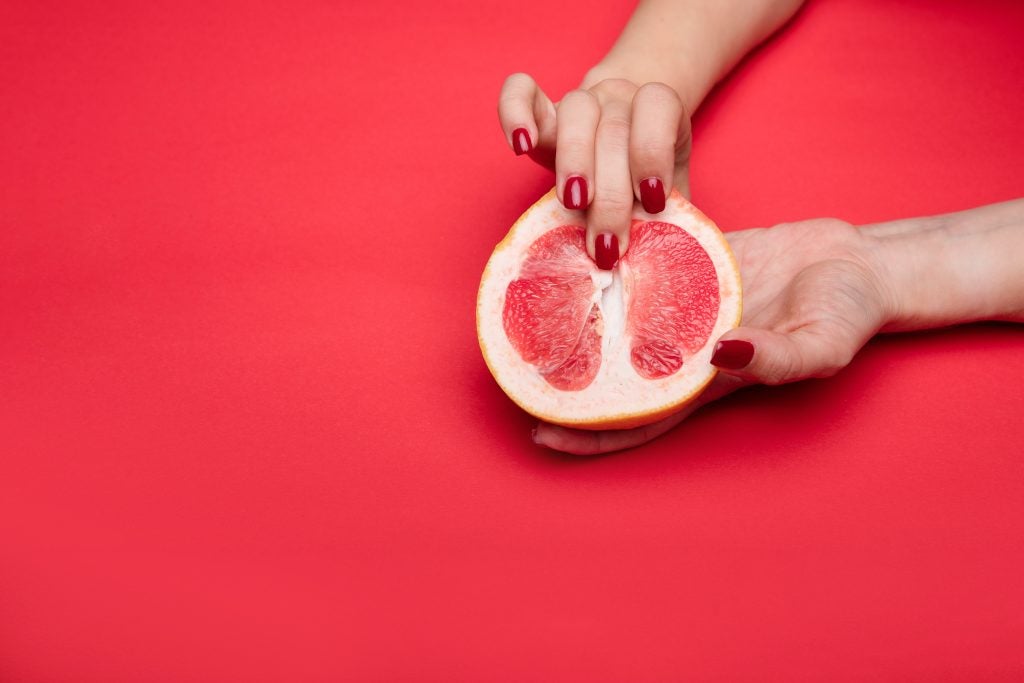
Table of Contents
What Is Low Sexual Desire?
Low sexual desire (LSD), characterized as the absence of sexual fantasies and thoughts and/or desire or receptivity to, sexual activity, is the most common sexual problem reported by females.1 Although this problem is not sexually dimorphic (affecting only one sex), the prevalence of LSD is much higher in females than in males. A recent study found that 26% to 43% of females report low sexual desire compared to 13% to 28% in males.2 LSD in males lacks significant understanding, as research has not been able to find any associating factors between males with LSD.3 In fact, a recent study from 2012 conducted with the intentions of finding a link between male low sexual desire and differences in age, levels of testosterone, depression, erectile dysfunction, illness, or medication use, consequently came to the conclusion that there were no clinically relevant disparities between males with LSD, and those without.4 Whereas, researchers concerned with female low sexual desire have conducted countless studies, which have successfully identified multiple associating factors (age, hormone levels, lifestyle choices, etc.) amongst women with low sexual desire, many of which will be addressed in this article.5
Lack of sexual interest is very common and alone does not constitute a sexual dysfunction or disorder. In order for low sexual desire, and in fact any sexual problem, to evolve into a dysfunction or disorder it must cause the affected individual distress, impairment, or disablement, which prohibit normal functioning.6 Low sexual desire, once diagnosed as a disorder, is referred to as Hypoactive Sexual Desire Disorder (HSSD) and is medically defined as the “persistent or reoccurring absence of sexual fantasies and desires for sexual activity that cause distress”.1 The distress experienced with HSDD can be caused by differences of libidos (sex drive) between partners or internal feelings of inadequacy. This disorder is recognized by the American Psychiatric Association as a sexual dysfunction, although many individuals experience similar symptoms without qualifying for diagnosis. The term HSDD in this article refers to the actual clinical disorder and the term LSD refers to general feelings of low sexual desire.
Low sexual desire can range from mild to extreme cases. In mild cases, a person may fail to initiate (or desire) sexual intimacy, but they can still respond to sexual advances and enjoy intimacy when it does occur. Moderate cases of HSDD can result in the failure to both initiate and respond to sexual intimacy. Sexual Aversion Disorder is an extreme form of HSDD that results in absolutely no desire for sexual contact; an individual with sexual aversion disorder can actually be repulsed by the mere notion of intimacy. As with many other disorders, HSDD can be primary (i.e., an individual has always experienced low levels of desire) or secondary (i.e., an individual previously experienced desirable levels of arousal and now does not).6 HSDD can become problematic in romantic relationships and if your partner struggles with it, it is important to be patient and supportive, as this disorder can already be stressful for the individual. There are currently no medicinal treatments (that are approved by the Food and Drug Administration) for HSDD, but there are different ways to increase sexual drive without pharmacological intervention.
What Causes Low Sexual Desire and How is it Treated?
Low sexual desire can have many causes and corresponding treatments:

- Age: As an individual ages, many changes occur in the body that affect sexual desire. Recent findings suggest that although older individuals experience physiological changes that can negatively affect their sex drive. Nonbiological factors can also effect sex drive having the potential to increase or decrease sexual desire. As individuals age, their priorities, interests, environments, and lifestyles change which can shift their attitude and feelings about sex, which explains an important anomaly in aging individuals. Specifically addressing why the number of aging individuals with feelings of low sexual desire increase with age, but instances of HSDD actually decrease. These findings were attitude to a recently conducted worldwide survey, which allowed researchers to make the connection that, as the number of people with feelings of low sexual desire increase with age, the proportion of those distressed by it actually decreases.7
- Menopause: Prevalence of low sexual desire tends to be more than twice as prevalent among menopausal individuals vs premenopausal individuals. Menopause (the cessation of ovulation) can have drastic effects on one’s libido (sex drive). These changes may include decreased lubrication, lower estrogen levels (the female sex hormone), lower testosterone levels (the hormone believed to be responsible for female sexual arousal), and vaginal atrophy (the thinning and decreasing elasticity of the vaginal walls).7
- Other Hormonal Changes: Problems related to the production of the hormones estrogen and testosterone can lead to sexual dysfunction. Because of these hormonal fluctuations (either increases or decreases), one’s sex life can be affected by endocrine disorders, pregnancy and postpartum deficiencies, endometriosis, diabetes, or fibroid tumors. Low testosterone levels also correlate with a low sex drive. Hormone replacement therapies can treat low sex drive caused by these imbalances. Therapy varies and can include the application of medicated vaginal creams, oral pills, or vaginal suppositories (i.e., medication inserted directly into the vagina). In such instances, a medical doctor should be consulted for possible treatment options.
- Gender: Although both males and females experience HSDD and LSD, the prevalence in females is higher. Biochemical differences in sexual hormone levels—primarily testosterone—may be the cause of this disparity.
- Negative sexual experiences: Low sexual desire can result from painful intercourse (dyspareunia), aversive events in childhood, or exceptionally high levels of emotional/sexual inhibition, which refers to the restrain or suppression of sexual feelings or behaviors. For instance, people who were sexually abused, view sex as a sin, or view sex as primarily for reproductive and not recreational purposes (oftentimes due to certain religious convictions) can experience low levels of sexual desire. Psychotherapy can be beneficial for individuals who have experienced sexual traumas. Treatments for dyspareunia (including sex therapy) can also increase sexual desire.8
- Depression: Individuals who suffer from depression oftentimes encounter decreased motivation and anhedonia (the inability to experience pleasure). Clinical depression results in a decreased desire for sexual activity because it is no longer pleasurable or rewarding. General mood deficiencies can also decrease libido. Clinical depression is a serious medical condition that should receive psychological or psychiatric care.
- Anxiety and stress: If an individual suffers from anxiety and/or stress, they may experience temporary or long-term decreases in sex drive, depending on the amount of stress or anxiety they experience. Stress and anxiety act as cognitive distractors that inhibit the natural sexual response cycle, which in turn affects sexual desire and motivation.8 Stress reduction via meditation, exercise, and other methods can help decrease stress and increase sexual desire. Anti-anxiety medications and psychotherapy can also help in treating anxiety disorders.
- Medicinal or psychoactive drug dependence: Certain medications, especially psychoactive drugs (for instance, drugs used to treat depression), often decrease sexual desire.8 A new line of antidepressant medication is now being offered that limits this side effect. An individual can consult their physician if they experience any sexual dysfunction side effects—an alternative medication may be available.
- Nonsexual medical issues: Diseases, such as diabetes, arthritis, migraine headaches, and cancer, can also affect sexual desire. These diseases are often extremely debilitating and cause general fatigue, which may inhibit an individual from desiring or participating in sexual activities.8 Chronic pain can also be a detriment to one’s libido.
- Habituation to one’s partner: Sexual interest may decline as the duration of the relationship increases. This is due to decreased novelty in the relationship and can be alleviated by introducing new and erotic concepts into sexual activity (e.g., sex toys, roleplaying, light BDSM, etc).
- Relationship problems: LSD can stem from unresolved conflicts in a relationship. Individuals often experience low sexual desire when they are upset or angry with their partner. Proper communication is essential for improving relationships and resolving discord that can trigger or exacerbate LSD. Family and relationship counseling can be helpful if the turmoil is causing distress to both partners and their loved ones.
What are the Signs and Symptoms?

Individuals who experience HSDD or LSD may exhibit particular signs and symptoms. For the symptoms to qualify as HSDD, they must also cause apparent distress in the person’s life and cannot result from certain medical and psychological conditions such as cancer or depression, respectively. Symptoms caused exclusively by the effects of a drug or substance do not qualify for HSDD diagnosis. The following are examples of common signs and symptoms.
- Little or no interest in sexual activity
- Decreased frequency in sexual activity
- Decreased frequency in sexual activity becomes a problem in the relationship and causes conflict
- Apathetic feelings during sex, despite attempting to please one’s partner
- Habituation to your partner that results in decreased desire to engage in sexual activity with that person
- Selective desire deficiency, in which an individual may be physically aroused but emotionally absent.
- No interest in pursuing sexual interaction
- Physical signs may include vaginal dryness, weakened erections, decreased genital sensation, difficulty achieving orgasm, and/or genital pain with or without sexual contact
However, it is important to note that this is not a diagnosis, and that there is a possibility that even an individual whom exhibits many of these signs and systems of low sexual desire, from any number of different underlying issues. A psychological, psychiatric, or physical consultation with a health care professional is necessary for proper diagnosis.
Alternative Treatments
The American Psychiatric Association states that bupropion hydrochloride sustained-release tablets, a common treatment for depression, are reportedly effective in treating HSDD in females. One-third of females treated with these tablets reported an increase in the number of episodes of sexual arousal, sexual fantasy, and interest in engaging in sexual activity. Results were seen as early as two weeks from the start of treatment. Reported side effects of the drug include insomnia, tremor, rash, hives, and urticarial (a rash caused by an allergic reaction).9
A non-pharmaceutical treatment option currently being investigated is the clitoral therapy device called the EROS-CTD. The device works by creating a gentle suction over the clitoris and surrounding tissue, with the goal of increasing blood flow to that area. This device is meant to enhance sensation and lubrication and eventually increased overall clitoral blood flow over time.10
Recent biochemical research suggests that HSDD can be treated by regulating certain neurotransmitter levels. Increasing dopamine and decreasing serotonin activity levels can result in increased sexual desire. The new drug, Lorexys, works by combining two antidepressant medications that together cause synergistic effects on the central nervous system that can treat HSDD. This drug is currently still being researched and is not yet available.10
Another treatment that has shown promise in treating HSSD in menopausal individuals is a testosterone patch. Testosterone production by the ovaries and adrenal glands play a very important role in maintaining female sexual health and menopause causes a 40% to 50% reduction in testosterone and a 30% to 50% increase in reports of low sexual desire. By using testosterone patches, individuals experiencing menopause can maintain higher levels of testosterone, increasing sexual desire. In a study including approximately 600 postmenopausal individuals, sexual satisfaction and libido improved significantly in those who received the testosterone patch.11
Other treatments include the use of sensate focus, masturbation, and Kegel exercises.
One of the most basic methods used to help an individual who is experiencing LSD is to encourage sexual self-exploration. An individual is instructed to follow the seven-step model illustrated below in privacy with soothing music playing in the background.8

- Look at your own body (in private, perhaps after bathing)
- Feel your own body
- Touch parts that feel arousing
- Try to get sexually aroused
- Extend masturbation until orgasm
- Allow partner to watch you masturbation
- Allow partner to imitate your techniques
This technique, along with the other treatments, may help to increase one’s sexual desire. If you are experiencing any symptoms associated with this disorder, it is important to seek medical attention first. The cause may be an underlying medical issue that can be alleviated by a physician. Seeking therapy for nonmedical causes can also be beneficial. Finally, open and effective communication in a romantic relationship is just as important as seeking external care. It is important to find the root of your low sex drive whether it be physiological, psychological, or interpersonal. Proper identification of the cause is essential for successful treatment.
Concluding Remarks
Low sexual desire or LSD is a very common issue in both men and women of all ages and has various causes and treatments. If low sexual desire causes distress in one’s life, it is important to seek out treatment. LSD is nothing to be ashamed of and, if distressing should be treated as any other physical or psychological disorder.
References
- Hypoactive Sexual Desire Disorder.” American Sexual Health Association: Your Source For Sexual Health Information, American Sexual Health Association, www.ashasexualhealth.org/hypoactive-sexual-desire-disorder/.
- Brotto, Lori A. “The DSM Diagnostic Criteria for Hypoactive Sexual Desire Disorder in Women.” Archives of Sexual Behavior, vol. 39, no. 2, 2009, pp. 221–239., doi:10.1007/s10508-009-9543-1.
- Stanton, Amelia M. “Hypoactive Sexual Desire Disorder.” Mestonlabcom, University of Texas, Dept. of Psychology, labs.la.utexas.edu/mestonlab/?page_id=586.
- Rubio-Aurioles, Eusebio, and Trinity J. Bivalacqua. “Standard Operational Procedures for Low Sexual Desire in Men.” The Journal of Sexual Medicine, vol. 10, no. 1, 2013, pp. 94–107., doi:10.1111/j.1743-6109.2012.02778.x.
- Hartmann, Uwe, et al. “Low Sexual Desire in Midlife and Older Women: Personality Factors, Psychosocial Development, Present Sexuality.” Journal of North American Menopause Society, vol. 11, no. no. 6, 2004, pp. 726–740., doi:10.1097/01.gme.0000143705.42486.33.
- Diagnostic and Statistical Manual of Mental Disorders: DSM-5. American Psychiatric Association, 2017.
- Hayes, R, et al. “Relationship between Hypoactive Sexual Desire Disorder and Aging.” Fertility and Sterility, vol. 87, no. 1, 2007, pp. 107–112., doi:10.1016/j.fertnstert.2006.05.071.
- LeVay, Simon, Janice I. Baldwin, and John D. Baldwin. Discovering Human Sexuality. Sunderland, MA: Sinauer Associates, 2012. Print
- Hamilton, Lisa Dawn, et al. “Cortisol, Sexual Arousal, and Affect in Response to Sexual Stimuli.” The Journal of Sexual Medicine, vol. 5, no. 9, 2008, pp. 2111–2118., doi:10.1111/j.1743-6109.2008.00922.x.
- “Low Libido Drug Treatments: Female Libido Drug, Addyi, Shows Modest Results.” Drug Discovery and Development, 11 Oct. 2019, www.drugdiscoverytrends.com/female-libido-drug-addyi-shows-modest-results/.
- Buster, John E., et al. “Testosterone Patch for Low Sexual Desire in Surgically Menopausal Women: A Randomized Trial.” Obstetrics & Gynecology, vol. 105, no. 5, Part 1, 2005, pp. 944–952., doi:10.1097/01.aog.0000158103.27672.0d.
Last Updated: 06 March 2020
